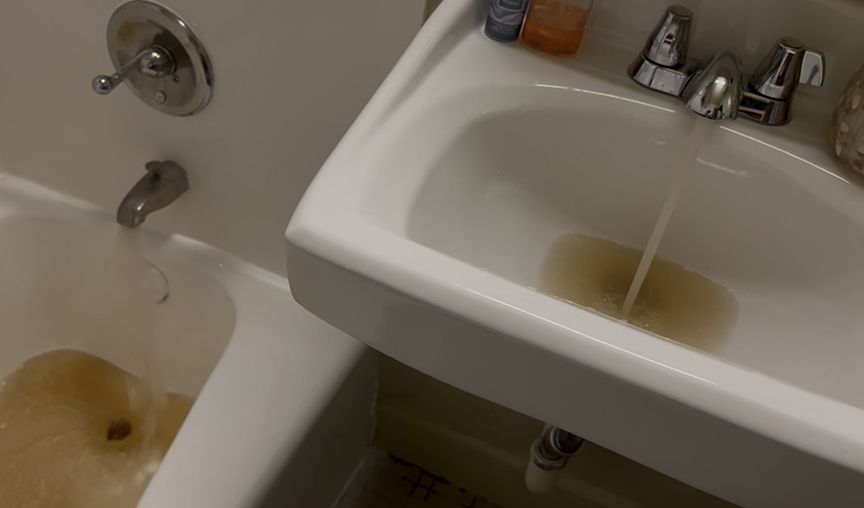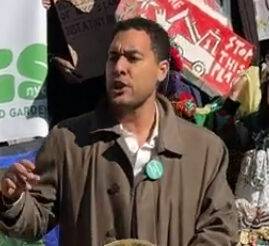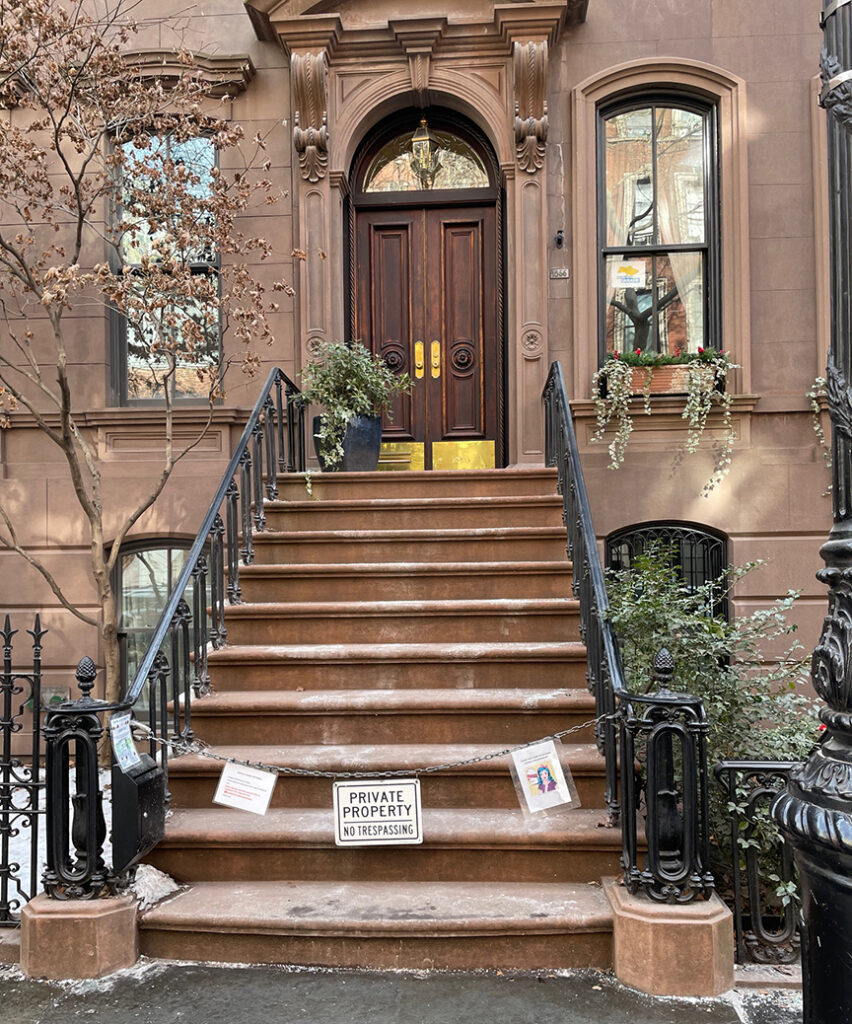Tenants and organizers gathered outside City Hall the morning of Feb. 26 ahead of a hearing on NYCHA’s Permanent Affordability Commitment Together Rental Assistance Demonstration Program (PACT-RAD) program.
Around 100 of them, under the banner of Save Section 9, which is fighting “gentrification, displacement and privatization” of public housing across the country.
The program converts NYCHA buildings from Section 9, where NYCHA manages their building, to Section 8, where a private company takes over as landlord.
Chief among the tenant concerns was transparency from NYCHA about what the program would do for them. April Summars, president of the LaGuardia Houses Tenants’ Association in the East Village, said, “NYCHA has never been a trustworthy partner on any issue.”
During the hearing, Council Member Chris Banks pressed NYCHA Vice President of Portfolio Planning Simon Kawitzky on whether resident input would be considered during the conversion process. Kawitzky said it was ultimately NYCHA’s discretion whether buildings would be converted, although, Kawitzky added, “residents, today, play a central role in making key decisions,” with regard to the PACT-RAD program.
The official line is that the PACT-RAD program allows for a “capital infusion” from the new private owners into buildings where NYCHA has a budget shortfall in maintaining them. Over 139 NYCHA developments now operate under the program, according to the agency.
For some residents at the Jacob Riis Houses in the Lower East Side, the PACT-RAD program seems like a way to sweep perceived NYCHA mismanagement under the rug. The Riis Houses have been struggling with a litany of maintenance issues, tainted soil and most recently, a scare that their water was contaminated with arsenic. NYCHA discovered the tainted soil two decades ago, and it still plagues the public housing development.
The buildings’ tenants will take an advisory vote between Feb. 27 and March 28, on whether they would like to join the program.
Sabrina Dingle, a resident of the Jacob Riis Houses, said, “I think NYCHA want’s us out of here,” referring to the PACT-RAD program.
“Let’s let Riis go down as much as possible, and then once the tenants are out, we’ll build it up,” Dingle said of NYCHA’s thinking in regard to the PACT-RAD program, and the issues that plague the Riis Houses.
A 2024 audit of the PACT-RAD program by Comptroller Brad Lander found the eviction rate of converted NYCHA houses “significantly exceeded” that of NYCHA.
Dingle agreed with Summars, stating, “There is not a lot of transparency,” adding that she doesn’t fully understand what would happen under the conversion.
In a statement to the Star-Revue, NYCHA said Jacob Riis’ “$940 million-plus capital need will be addressed while all resident rights and protections are preserved.”
NYCHA added that they have met with residents and tenant association leaders to “shape plans for physical investments, property management, social services, and public safety,” in regard to the PACT-RAD conversion of Riis.
Adding to Riis residents’ fears about the PACT-RAD program are the current conditions at the Riis Houses, which they describe as “horrendous” and like a “horror movie.”
Arsenic in the water?
Sheletha Hill, Dingle’s next door neighbor, has been hospitalized multiple times due to the conditions in her apartment. Last spring, both Dingle and Hill reported clumps of their hair falling out, rashes on their skin, a burning sensation in their throat and stomach pains. Following a bout of asthma flare ups and the aforementioned issues, Hill went to NYU Langone where doctors struggled to figure out what was wrong with her. Two weeks after her visit on March. 1, Hill’s test results came back: Her arsenic levels were “high” — 117 micrograms per liter — 12 times the “normal” limit. Dingle also reported she had high levels of arsenic.
In a letter from Dr. Tareq Azad, to NYCHA, in regard to Hill’s tests, Azad pressed the agency that “it is critical that the water in her building be tested immediately for arsenic.”
NYCHA has contended that they have tested the water in Riis Houses over 500 times, but have never found arsenic. Hill and Dingle don’t buy this.
On April 1, while Hill’s apartment was being renovated by NYCHA following Azad’s letter, she spoke to the building’s Housing Manager, Larissa Ilboudo-Kakou, who told her, “I think it might be the water… because if the arsenic came later on, I don’t know.”
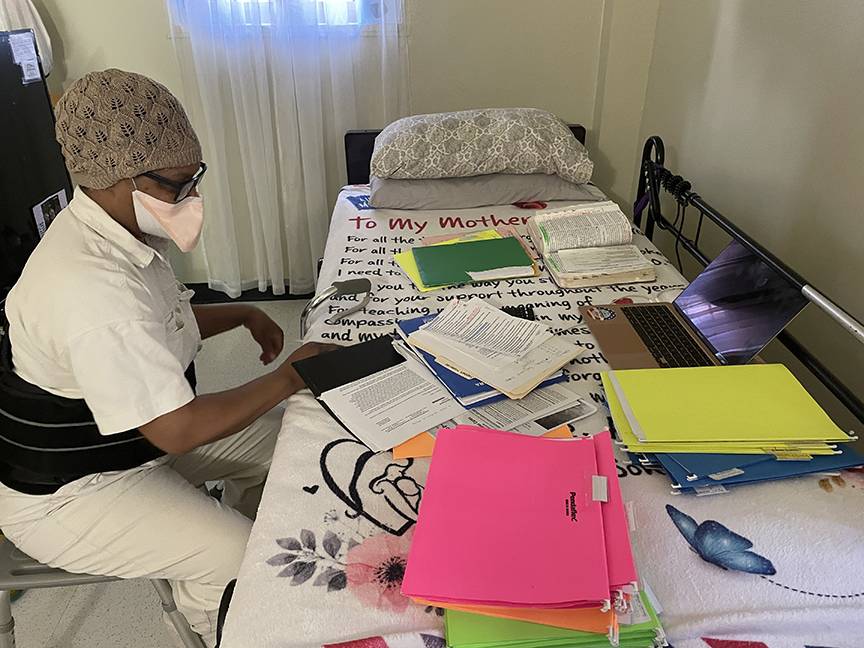
Hill’s mistrust of NYCHA has caused her to turn her apartment into an evidence room. The walls are filled with notes marking Housing Preservation and Development violations. In her kitchen, she’s collected bottles full of water from every faucet in her house.
Regardless of the results of the water tests conducted by NYCHA, Hill’s water comes out orange. Many bottles have floating particles in them.
“We don’t know what that is,” Hill remarked at one bottle filled with brown specks. So, Hill, and many residents in the Riis Houses, have opted to buy water for everything from drinking to bathing. In her bathroom, she keeps a bucket of water bottles for that very reason. It costs her hundreds of dollars.
NYCHA contends “there is no water quality concern in the drinking water at Riis Houses.”
But her troubles aren’t limited to the building’s taps: Every wall is bubbling with water; the exposed pipes are covered in a dried brown liquid, which remains a mystery to Hill; asbestos is everywhere; and mold is hidden around nearly every room.
Dingle’s apartment is similarly full of mold, asbestos and the bathroom. She “doesn’t know what’s going on” in there. Dingle said the bathroom has been the site of her son’s “incidents”—seizures, which started in 2020. He had no known medical issues, so it came as a surprise to Dingle when the neurologist, during one of her son’s visits, asked, “Did someone try to poison you?” remarking on his arsenic levels.
Last father’s day morning, her son stepped out of the bathroom and had a “massive” stroke. Doctors had to remove part of his skull to reduce the swelling, according to Dingle, and now he resides in the Queens-Nassau Rehabilitation and Nursing Center.
Dingle said NYCHA tested her apartment but never received the results of the test.
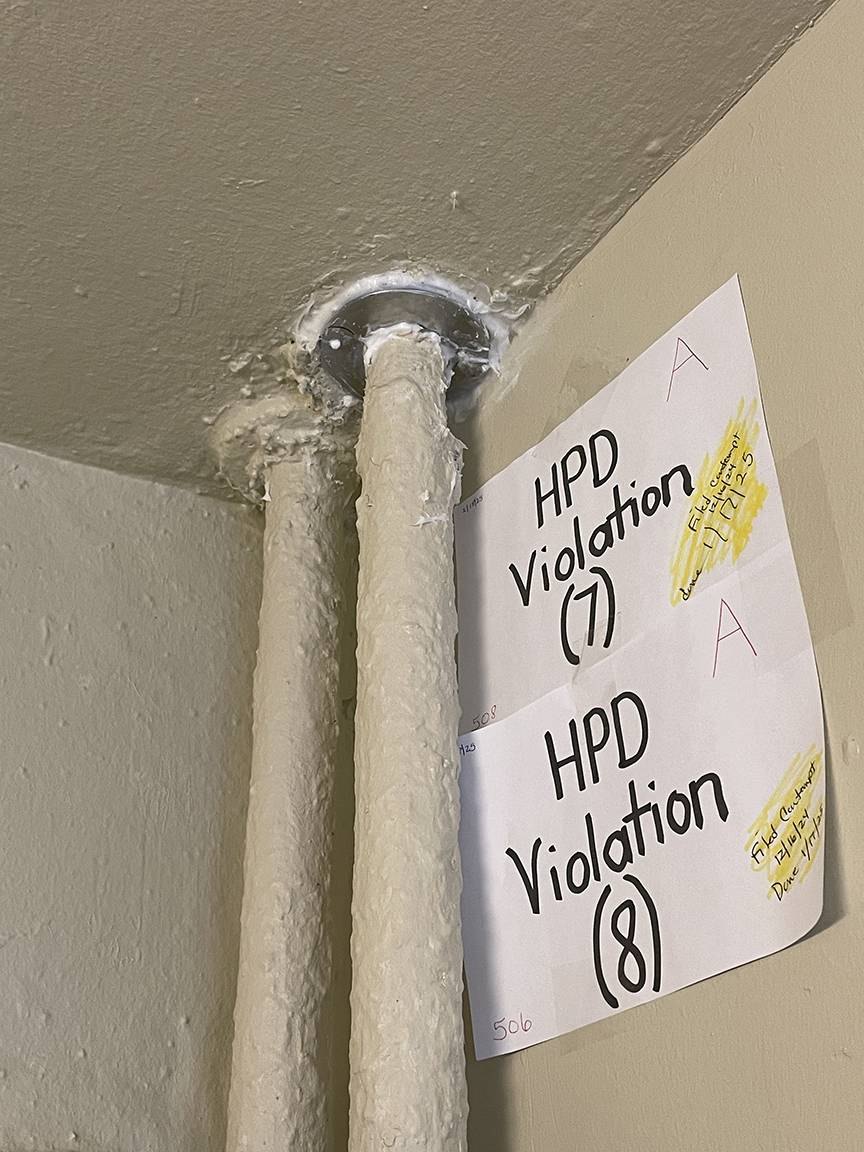 Environmental apartheid
Environmental apartheid
Joel Kupferman, an environmental attorney who sued the EPA over particulate exposure from the Sept. 11 attacks, described the situation at the Jacob Riis Houses as “environmental apartheid,” noting the number of poor and people of color at Jacob Riis houses, who he feels are neglected by NYCHA.
Kupferman said the situation at Riis is one of the worst he has ever seen. The soil outside the Riis houses is tainted with heavy metals. Reports he shared with the Star-Revue measuring the levels of heavy metals show arsenic, chromium, cadmium and especially high levels of lead in the soil. These metals could be seeping into pipes and particulates could be spraying across the Riis
Houses from the steam pipes across the property, according to Kupferman. A separate report by The City also found heavy metals in the soil around Riis Houses.
Kupferman believes the levels of heavy metals are the cause of the health issues that Dingle, Hill and a number of their neighbors have suffered.
“It’s not complete testing,” Kupferman said of NYCHA’s testing. “They’re not testing people’s blood.”
According to a letter from nephrologist Joshua Rein to the commissioner of the New York State Department of Health, the arsenic levels may have been fatal too.
Rein writes in his letter he evaluated a 74-year-old woman with chronic kidney disease who died of pneumonia on Oct. 1, 2022, the same year NYCHA claimed there was testing error that showed the water in Riis houses contained arsenic. Rein notes that the woman had arsenic levels of 39 micrograms per liter, and “it is possible that arsenic may have played a role in her death.”
Kupferman worried the PACT-RAD conversion would mean “even less accountability” for the new managers and the city with regard to the conditions at the Riis Houses.
Jacob Riis Tenant Association President Daphne Williams stated “PACT has the potential to provide better living conditions” in a NYCHA press release.
NYCHA’s selling point for PACT-RAD is that “the program will bring significant funding to complete comprehensive renovations to the existing buildings or build new, modern buildings at Jacob Riis Houses.”
But, Dingle questioned, “Who do we hold accountable… and if you want to convert it, you still have got to do the right work.”

